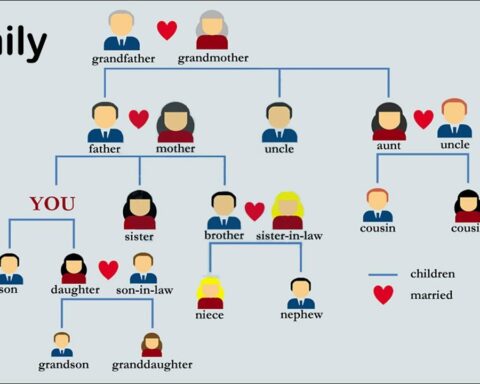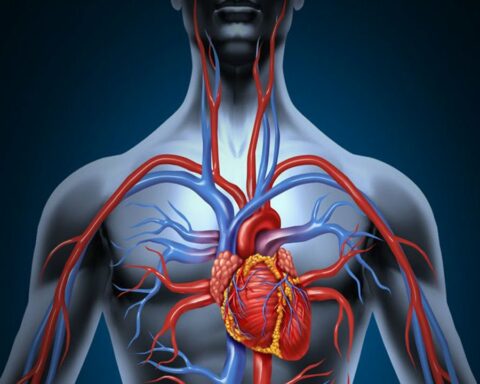Alternate-day fasting involves choosing two alternating days to fast and then eat on the other days. It promotes weight loss, good heart health, helps in reducing risks for type 2 diabetes, and enhances autophagy.
Intermittent fasting has gain popularity in the recent past for it claimed health benefits and weight loss program. Alternate day fasting is fasting in which you fast every other day and eat anything you wish during eating days. Today, it is modified to allow you to eat about 500 calories while fasting. Alternate-day fasting is praised for promoting weight loss and reducing type 2 diabetes and cardiovascular diseases.
How To Practice Alternate-Day Fasting (ADF)
The mechanism of this fasting habit is to fast on a certain day and then eat on the other days whatever you want. You can drink calorie-free drinks such as unsweetened coffee, tea, and water, and you can also include 500 calorie foods during your fasting if you are on a modified version. Studies show that alternate-day fasting is beneficial for weight loss and general health improvements since calories are restricted, and the digestive system is given time to rest.
Weight Loss and The Alternate-Day Fasting
Though ADF is claimed to facilitate faster weight loss, studies indicate that the program is not superior to other traditional ways of restricting calories. Some studies suggested that ADF promotes weight loss by 3-8% in 2-12 weeks. Some studies have also proven that ADF is not superior to traditional calorie restriction methods in reducing inflammation and compacting harmful belly fat in individuals with obesity. However, it is superior in preserving muscle mass and general fat loss.
This fasting method’s weight-loss effectiveness is enhanced when combined with exercise or increased physical activity. One study demonstrated that incorporating endurance exercise during fasting may result in twice the weight loss achieved by ADF alone and six times more weight loss than what exercise alone can achieve.
ADF And Hunger
ADF’s effect on hunger is inconsistent, with some studies showing that hunger subsides during the fasting period while other studies also suggest that hunger level is maintained. It is because of the extreme hunger pangs that lead to modified ADF that allow for an intake of not more than 500 calories during the fasting period. One study indicated that ADF is effective in enhancing BDNF in the brain after 24 weeks. This study concluded that alternate-day fasting could contribute to long-term change in BDNF, promoting sustained weight loss.
ADF also affects hunger hormones in animals but no significant effects on humans. Animal studies have shown that implementing ADF increases satiety hormone while reducing hunger hormones better than other diets. ADF seems not to contribute to compensatory hunger, which is hunger due to restricted calories that make people eat more calories than normal when they are allowed to eat. Some individuals who practice this fasting method have claimed that hunger pangs subside after two weeks and that with time the fasting days seem effortless.
ADF And Body Composition
Research shows that ADF significantly affects an individual’s body composition during weight maintenance and diet days. ADF is efficient in eliminating fat mass and body weight. Some studies show that ADF contribute to preserving muscle mass than other calorie restriction diets. Nevertheless, recent studies paint a different picture showing that ADF is no superior to other traditional calorie restriction methods in mass muscle preservation.
Health Benefits
This type of fasting is often promoted for its benefits in weight loss, but it has other benefits.
It May Prevent Type 2 Diabetes
Type 2diabetes is the common type of diabetes in the world and is characterized by high blood sugar levels in the blood. Most people are also prediabetic, a condition almost becoming diabetic with rising blood sugar levels. Weight loss has been considered the most efficient way to reverse prediabetic conditions and reduce symptoms of type 2 diabetes.
ADF also reduces the release of fasting insulin hormone, a hormone often linked to obesity, cancer, and heart disease. A reduced insulin level or insulin resistance combined with weight loss can significantly minimize the risk of type 2 diabetes.
It May Improve Heart Health
According to studies, cardiovascular disease is one of the major causes of fatalities globally, responsible for one in every four deaths. Several studies suggest that ADF can help in weight loss for obese and overweight individuals, contributing to reduced risks of heart disease. ADF can reduce waist circumference, lower LDL cholesterol, decreased blood pressure, and a decreased blood triglyceride level.
ADF And Autophagy
Autophagy is the process in which healthy cells eat up the old dying cell that could cause inflammation. This process can prevent diseases such as heart disease, neurodegenerative disease, and cancer. Several studies have shown that fasting can induce autophagy in the body, resulting in delayed aging and minimizes the risk of tumor growth. A study on rodents, worms, flies, and yeast has indicated that fasting contributes to increased lifespan. No wonder hunters and gatherers lived longer due to a longer fasting period.
During fasting, healthy cells turn to dead cells for food and nutrient by eating them up. The clearing of dead cells reduces oxidative damage and inflammation, thus promoting longevity.
Is ADF Good for People with Normal Weight?
ADF is not only used for weight loss since it offers many other health benefits, even for people who are not obese. Practicing ADF can increase your fat-burning process, decreasing your fat mass and fasting insulin. You will reduce the risk factor for heart disease by regularly practicing ADF. However, if you do not want to lose more weight or fat mass, you can choose another dietary method because ADF leads to weight loss.
What To Drink and Eat During Fasting Days
The modified version of ADF allows for the consumption of up to 500 calories during fasting days, and there is no rule as to what to eat so long as you do not exceed the calorie limits. You can incorporate frequent drinking of non-caloric drinks such as water, unsweetened coffee, and tea. Some prefer to eat these 500 calories once a day, while others spread the calorie intake throughout the day. Because your calorie intake is minimized, you should choose high protein foods and low-calorie vegetables to make you full without additional calories. You can also incorporate soups as part of your drinks with low calories and keeps you full. Some of the foods that you may include in the 500 calories include eggs, yogurt with berries, vegetables, soup and a piece of fruit, grilled fish with vegetables, lean meat with salad.
The Bottom Line
Most people have achieved weight loss and other health benefits by following alternate-day fasting. It is good for your heart health, type 2 diabetes and can act as an anti-aging mechanism. However, it is not suitable for pregnant women, children, people with eating disorders, or Gilbert Syndrome.
- Missionary Position – Least Likely To Bring You To Climax - April 7, 2023
- Vibrators could put you in Jail - March 31, 2023
- Ball Gag Bondage - March 29, 2023






